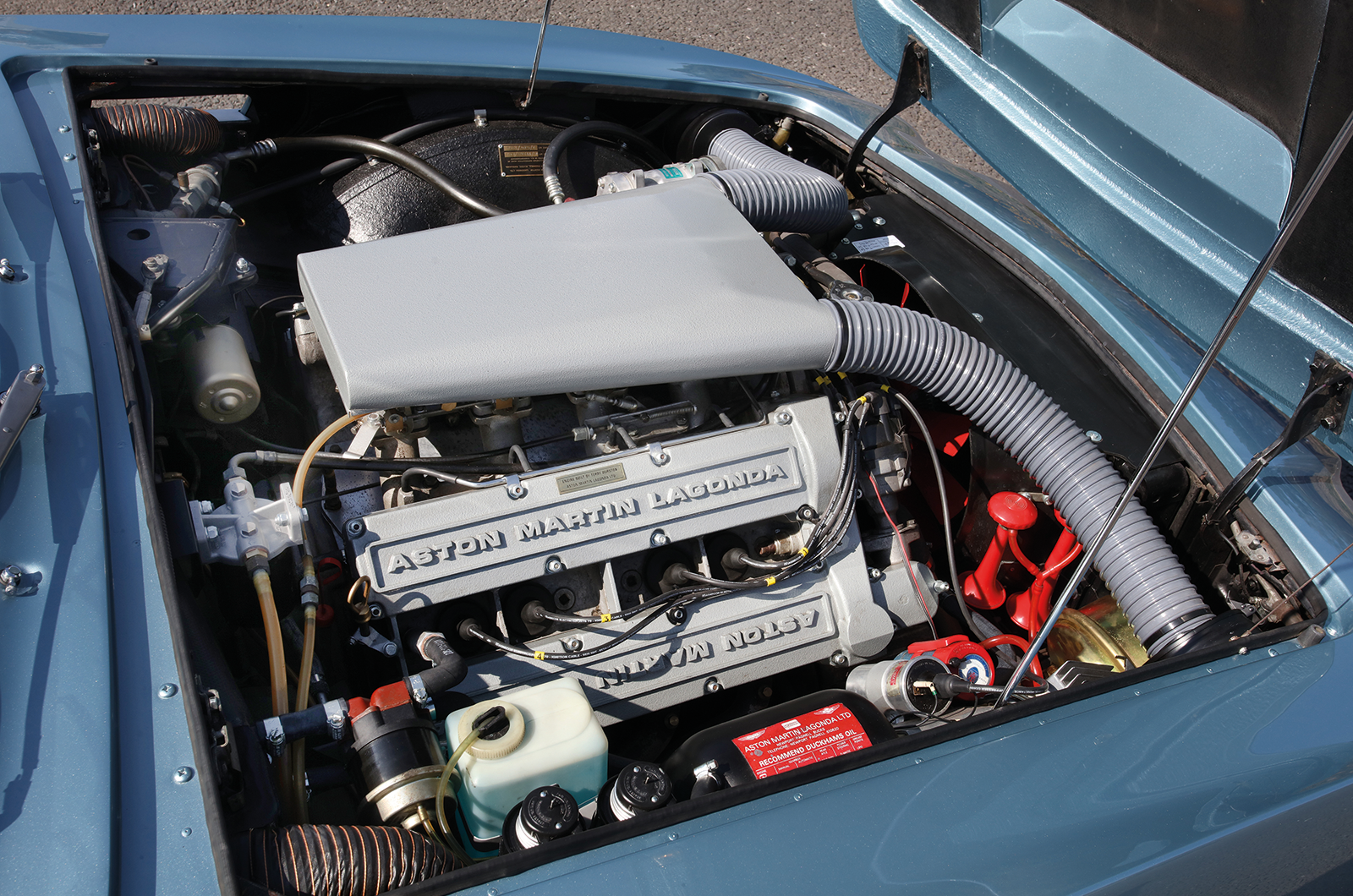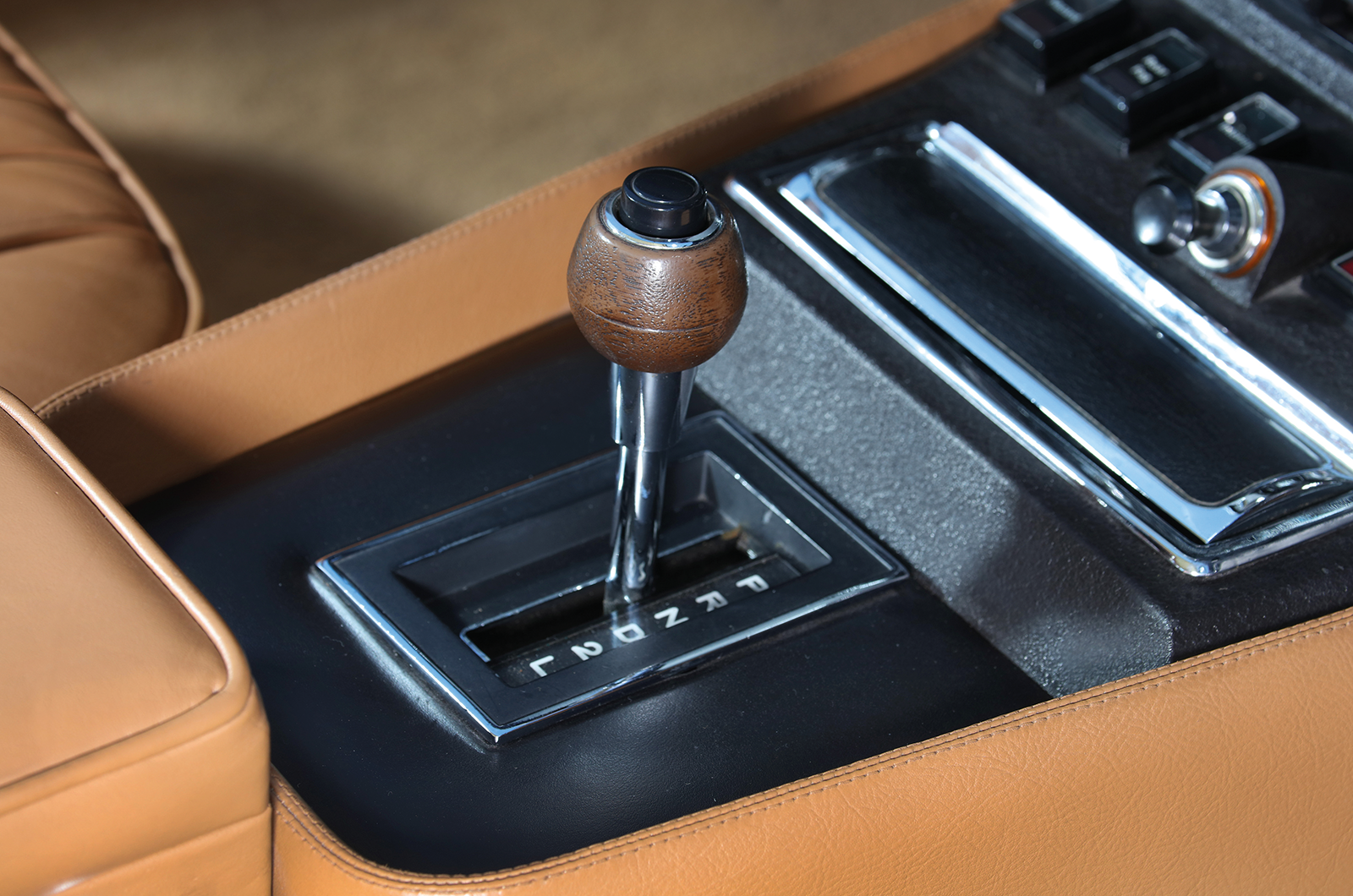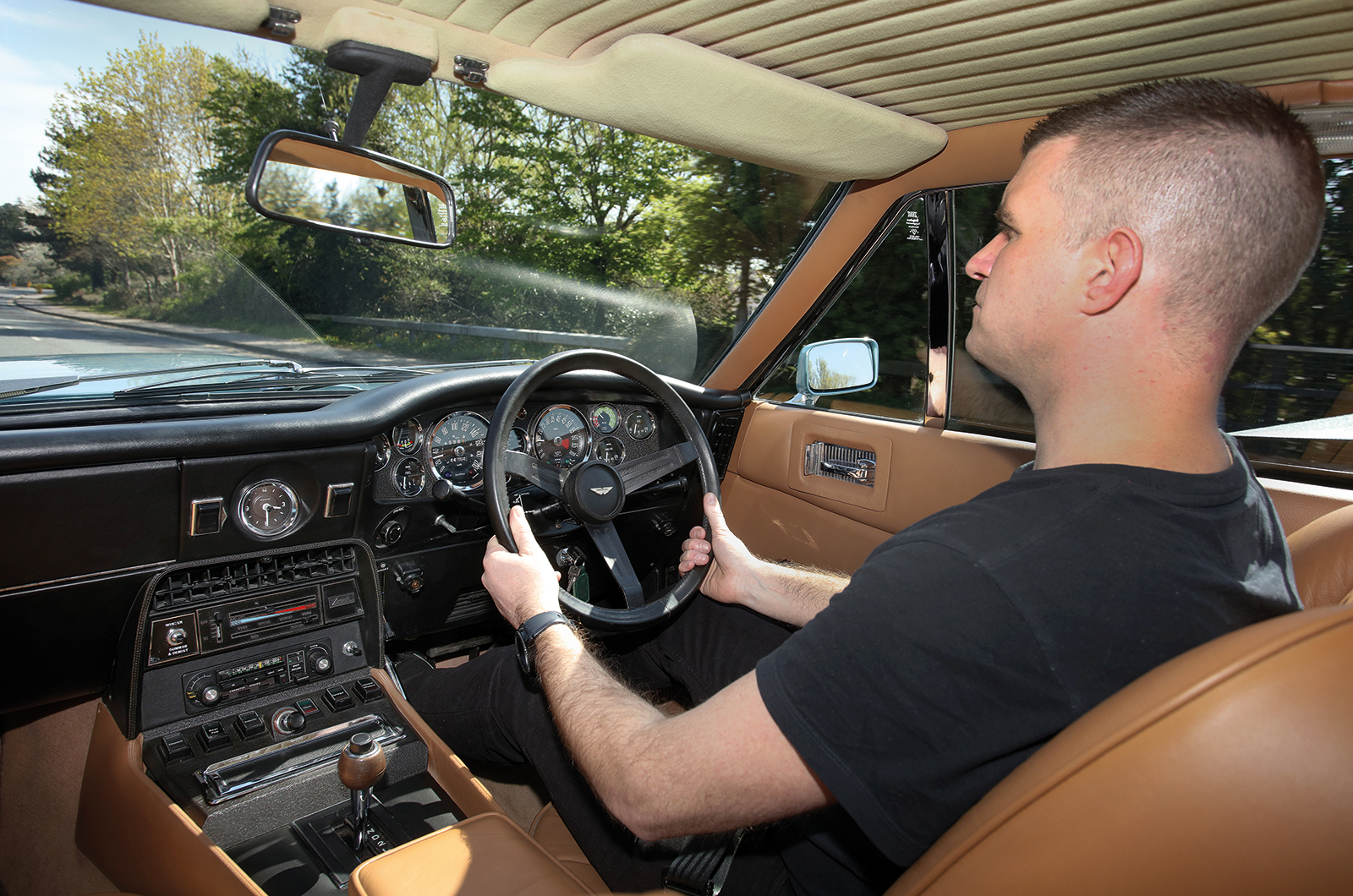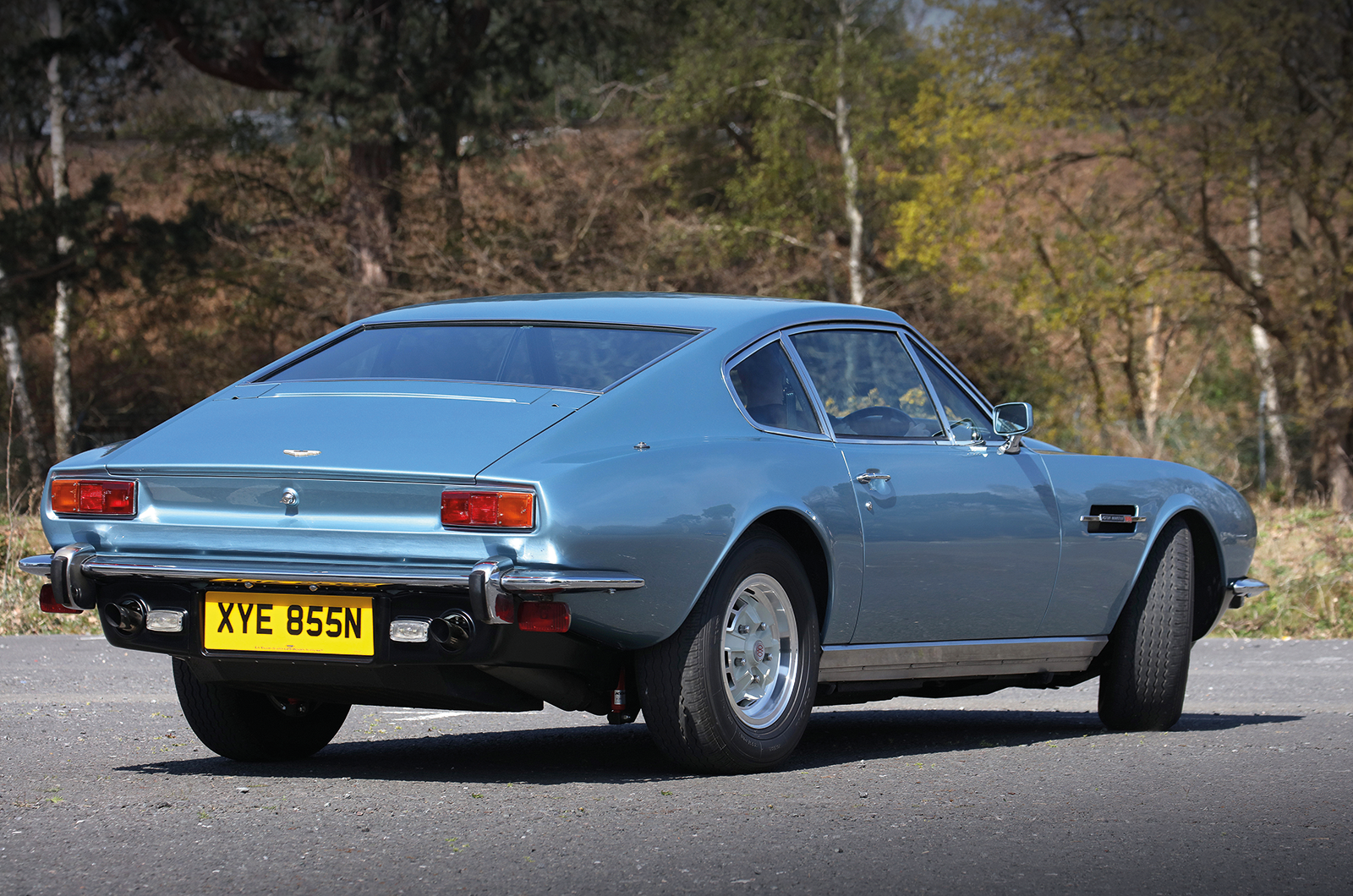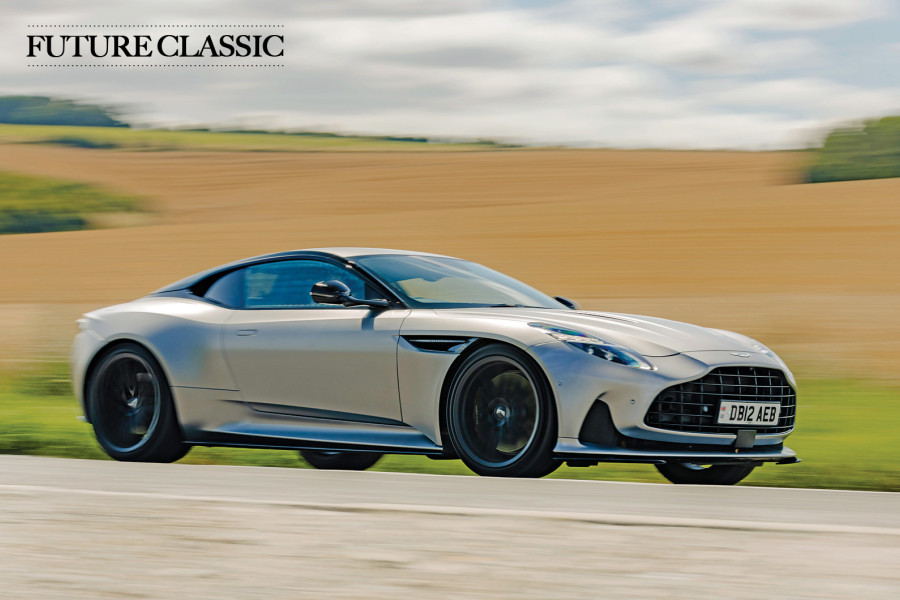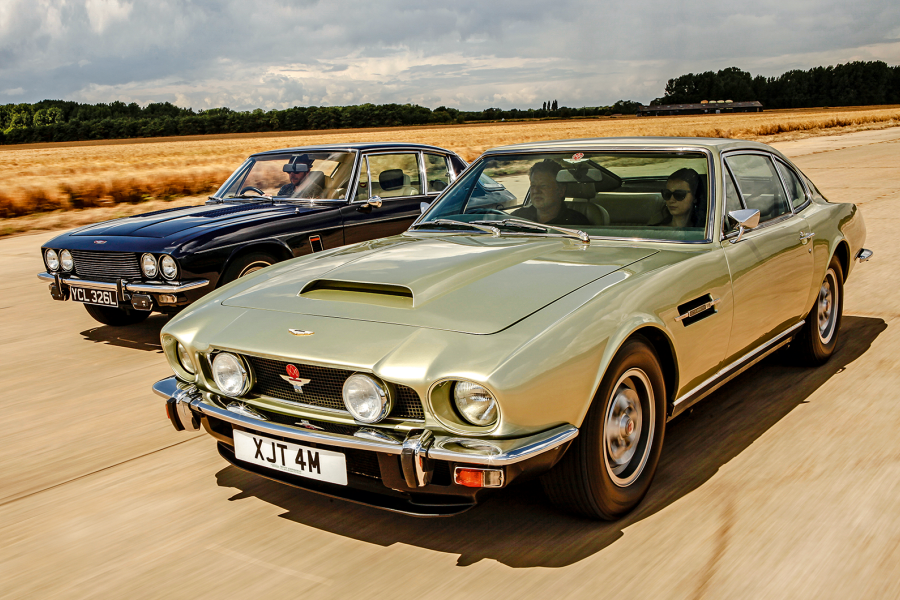
Why you’d want an Aston Martin V8/Vantage
Engineer Tadek Marek’s all-aluminium, quad-cam, fuel-injected V8 and the William Towns-designed DBS that had been created to house it were both superb, but extremely costly to build, forcing David Brown to sell Aston Martin in 1972.
New owner Company Developments relaunched the model as the Aston Martin V8 with a neat front-end restyle, again by Towns, that lifted the DBS shape into the 1980s.
Sound and heat insulation were improved, Lucas Opus electronic ignition (shared with the V12 E-type) was adopted, air conditioning was standard and a leather steering wheel replaced wood.
Like Jaguar, Aston couldn’t meet US emissions regs with fuel injection, so changed to carburettors – four Webers with a larger bonnet bulge.
Underfunded Aston Martin went into receivership at the end of 1974, but was revived and incoming MD Alan Curtis put the company back on its feet with new performance options on the V8, including the V8 Vantage in 1977.
Victor Gauntlett took control in 1981 and Aston was backed by Greek shipping magnates in the ’80s, though still had financial worries at times.
The Aston V8 is a big, heavy car but fine handling helps it to shrink around the driver and it rarely feels as large as it really is.
It’s a genuine four-seater, albeit cramped in the back, with heady performance – especially the Vantage. It’s thirsty, but you don’t buy an Aston for economy.
A very competent DiY mechanic can maintain an Aston V8, though parts are expensive and you’ll need plenty of time.


